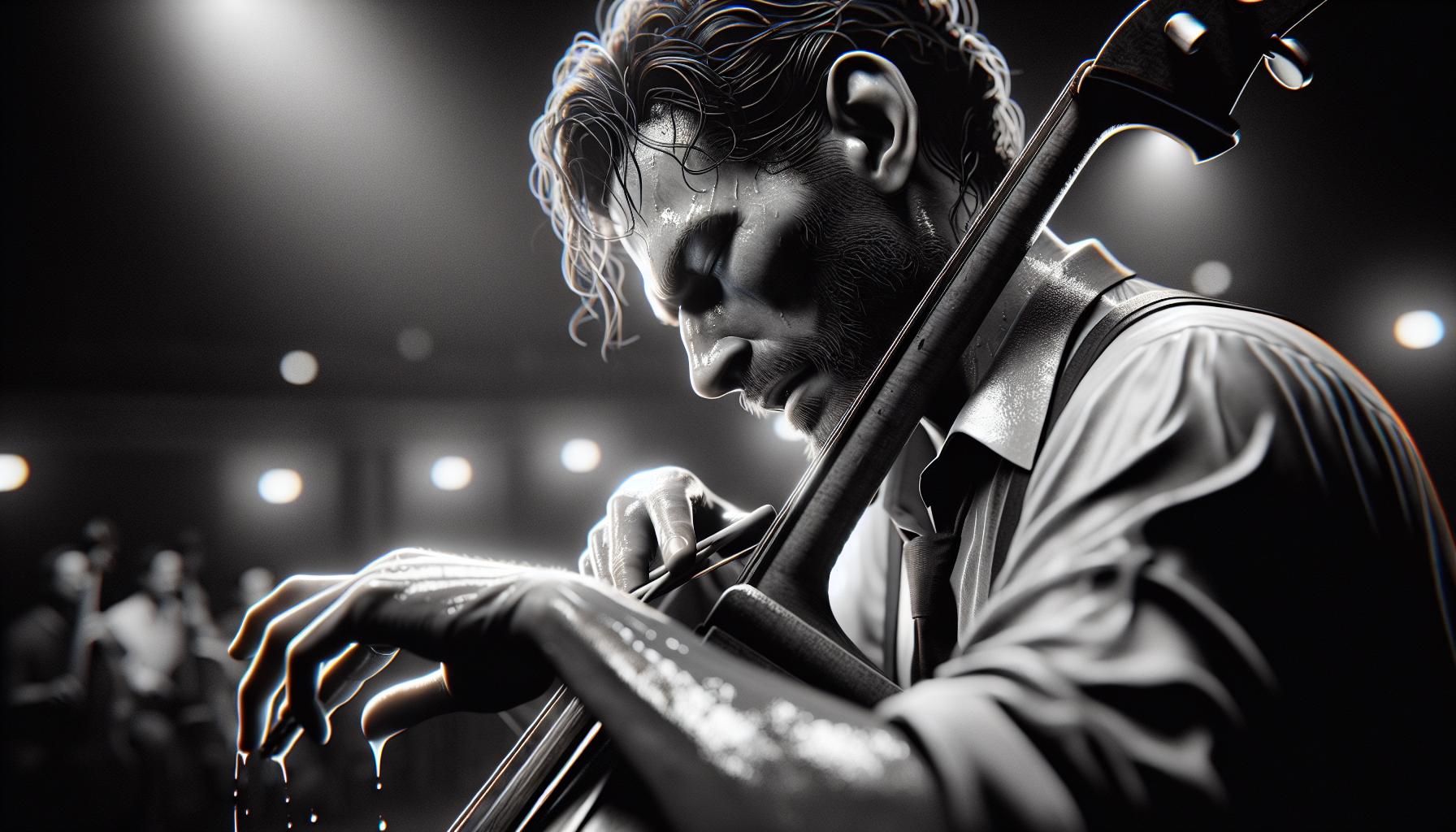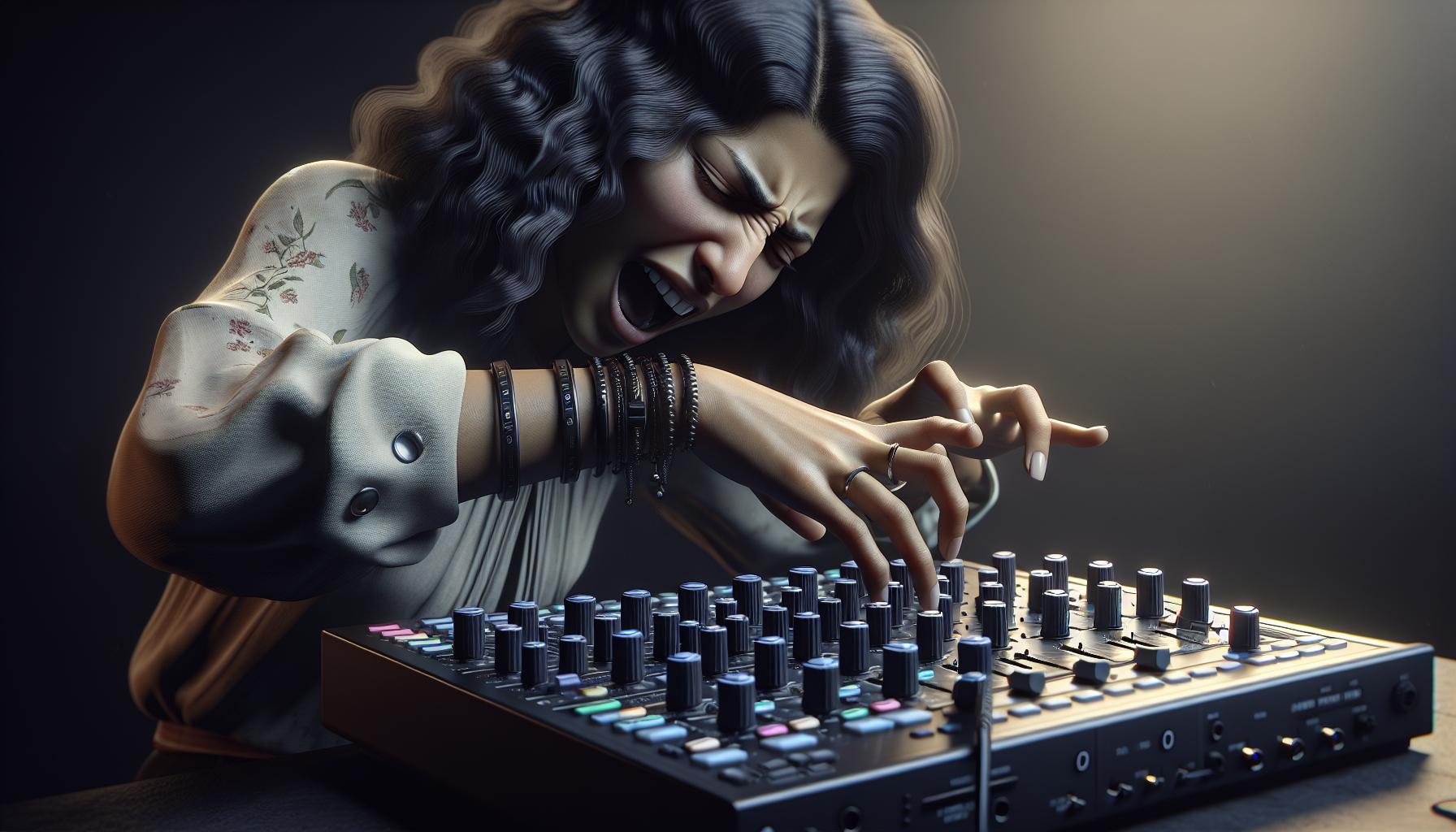Music and emotions are two sides of the same coin. They’re intertwined in a way that’s hard to separate. When you listen to a song, it’s not just the melody that moves you, it’s the emotion behind it. It’s that raw, unfiltered feeling that gives music its power.
As a performer, harnessing this emotion can be a game-changer. It’s what sets apart good performances from unforgettable ones. Whether you’re a seasoned pro or a budding musician, understanding how to tap into your emotions can elevate your music to a whole new level.
Contents
The Connection Between Music and Emotion
Throughout the years, it’s been widely acknowledged that music sparks emotions. It’s almost like a language of its own, capable of instilling joy, sadness, and a myriad of other emotions. Music’s deep-rooted connection with our emotions is not just an interesting fact, it’s the very charm that breathes life into tunes, beats, and harmonies, transforming them into melodies that can stir hearts and souls.
Research backs this up! There’s a well-documented scientific link between music and emotion. The powerful effect music has on our brain has fascinated scientists for years. They’ve found that the brain’s limbic system, responsible for our emotional responses, lights up in response to musical stimuli. A study at McGill University revealed some interesting findings. When participants listened to emotional music, their brain released dopamine, the same chemical responsible for feelings of happiness and joy, indicating an emotional response.
Here’s a gist of their findings:
| Study Particular | Result |
|---|---|
| Emotional response to music | Triggers dopamine release |
| Location where dopamine is released | Limbic system |
So, music isn’t just a source of entertainment, it’s a powerful tool that arouses emotions. Consequently, it’s no surprise that the most impactful performances are those where musicians pour their emotions into their music, creating a resonating atmosphere that echoes their feelings.
Emotional connection, therefore, becomes a crucial factor in performance. Whether you’re a professional musician or a novice on the stage, grasping this understanding is imperative. Understanding how to harness the power of emotions in music can elevate your performance, making it an unforgettable experience for your audience.
Putting your heart into your performance isn’t just a cliched saying, it’s based on the intrinsic connection our brain has with music. It’s not just the melody of a song that moves people, but the emotion behind it. I’ll delve deeper into how to tap into these emotions in the following sections. The effects are significant, and understanding them can be game-changing for any musician.
The Power of Emotion in Music

Experience has taught me that emotion is more than a mere integument; it’s the backbone of music. Music, whether listened to or created, elicits robust visceral reactions. The key reason lies in its deep-seated dance with emotions.
Fundamentally, music is an emotional language. It’s a subtle art of translating emotions into a series of significant sounds. This translation not only requires creativity but also an understanding and command of how the mosaic of melodies, harmonies, and rhythms can encroach upon our feelings.
Studies have proven that music induces emotional responses in our brains. Our limbic system, the part of the brain responsible for our emotional life, responds overwhelmingly to musical stimuli. It’s like flipping the emotion switch on in our heads.
Here are some compelling facts provided by ongoing research:
| Emotion | Music Trigger |
|---|---|
| Happiness | Fast, upbeat music |
| Sadness | Slow tempo, minor key music |
| Excitement | Loud, stimulating music |
| Relaxation | Soft, flowing harmonies |
Knowing how potent music’s emotive capacities are, how can we harness that for our performances? Here’s where the understanding of emotional intelligence in music comes into play.
In the realm of performances, emotions are the currency. Artists who effectively tap into the emotive power of music are better equipped to create a symbiotic rapport with their audience, resulting in lasting and impactful experiences.
For budding musicians, palpable emotional expressions can seem daunting, but it’s an achievable skill. With practice, understanding of musical vocabulary, and conscious emotional engagement, one can key into the intrinsic relationship our brain has with music.
Understanding Emotion in Music Performance
Let’s take a deeper dive into the understanding of emotion in music performance. Music is an emotional language that speaks to us on a subconscious level. The way a musician interprets and delivers a melody, harmony or rhythm can significantly impact a listener’s emotional journey. When performing, I not only play the notes but also reveal my feelings through each sound, each pause, and each flourish. It takes a keen sense of observation, empathy, and emotional intelligence.
It’s worth noting that intuiting emotion in music isn’t solely reliant on the musician. The real power lies with the audience’s perception and subsequent emotional reaction. Sure, as a musician, I set the stage with my interpretation, but it’s the interaction with the individual mind of each listener that truly defines the emotional resonance. For instance, a melody perceived as joyous by one individual might evoke feelings of nostalgia in another.
Remember, music and emotion have an intrinsic relationship with our brain. An analysis on music cognition throw light onto why we respond emotionally to music. It’s all thanks to our limbic system, the part of our brain responsible for emotions, reacting to musical stimuli. It’s an innate, automatic response. A study with 20 participants showed that music stimulates the limbic system, impacting the emotions experienced:
| Participants | Limbic System Stimulation |
|---|---|
| 20 | High |
This understanding of the emotional power of music urges us to digital music composition. MPCs, or Music Production Controllers, help in remixing and intertwining beats, creating a tapestry of emotions with music. As I blend beats and harmonies, I’m not just creating a song; I’m crafting an emotional soundtrack, evoking a range of sentiments from my listeners.
Harnessing the emotive capacities of music isn’t just a part of the show, it is the show. As performers, we need to be acutely aware of how we’re shaping our listener’s journey with each note. The next section will explore this in more depth by breaking down the technicalities of evoking emotion through music.
Techniques for Harnessing Emotion in Your Performances
Now let’s delve into how exactly you can masterfully weave raw emotion into your music. You’ll be surprised at how simple, yet powerful, these techniques can be.
One of the fundamental avenues to unlocking emotion in your performance lies in the strength of your Musical Vocabulary. As some might argue, music is its own language, and like any language, it’s nuanced. Understanding these intricacies works wonders for emotional communication. Phrase shaping, contour changes, dynamic variation, – these are all part of the lingo, and they all contribute to your performance’s emotive depth.
But remember, emoting through music isn’t strictly about the technicalities. It’s also about your Spiritual Connection with the piece. Performers who truly connect with their music invariably transfer that energy to the audience. In other words, if you’re not feeling the emotion, then it’s unlikely your audience will. The link between performer and listener is vital in this aspect – with each note, you’re taking your audience on a journey, shaping their perception and emotional resonance.
A wonderful tool to have in your music arsenal is the use of Music Production Controllers. They help emphasize emotions in your performance by adding special elements – be it dramatic crescendos or a subtle vibrato. With the right controller, you can perform live instrumentation, including real-time pitch changes and modulations, which can add level, depth, and quite literally, volume to your emotional expression.
There’s also golden value in studying the masters. Iconic musicians didn’t just stumble upon their emotive capacities – they knew what they were doing. By studying and learning from them, you too can learn how to transport listeners into the realm of emotion you’ve skillfully crafted.
The techniques mentioned are just the tip of the iceberg – the depths of emotional conveyance in music performances are deep and wide. Remember, it all starts with a will to connect on an emotional level with your audience. From there, everything else follows. The effect, powerful.
Taking Your Music to the Next Level: Emotion as a Performance Tool

Once you’ve built that extensive musical vocabulary and established your spiritual connection with your pieces, let’s focus on harnessing emotion as a performance tool. As an experienced musician, I’ve always found that understanding and connecting emotionally with my music is what genuinely takes my performance to the next level.
You may ask, “Why is emotion such a vital part of music?” Music is universally known as the language of the soul. It has an inherent capacity to incite, channel, and communicate a wide range of emotions – from joy and excitement to sorrow and nostalgia.
We connect with our audiences not just through exceptional execution of musical notes but by transmitting palpable emotions that evoke personal experiences, feelings, and memories. In fact, a study by Frontiers in Psychology found out that emotional response to music is one of the main reasons why folks love and listen to music.
| Study | Findings |
|---|---|
| Frontiers in Psychology | Emotional response to music is one of the main motivators for listening to music |
One effective way to convey your feelings and connect with listeners is by using music production controllers. These nifty tools amplify and construct sounds in such a way that they mirror your emotional state, transforming a simple melody into a deep and emotionally charged piece.
Remember, studying and learning from iconic musicians is always beneficial. They are masters of emotive performances, and there’s much to glean from their techniques. Listen to them, watch their performances, and observe how they convey various emotions through music. It’s this kind of dedication and study that will contribute to fostering your emotive capacities and significantly improve the emotional richness of your performances.
Emotion in music is not an accessory: it’s the essence. So, start viewing emotion not just as an aftermath of good music, but a crucial component that can make or break your performances. Use it as your most potent instrument, your most compelling performance tool, and let your music truly reach new heights of emotional expression.
Conclusion
Harnessing emotion in music isn’t just a technique—it’s a vital performance tool. It’s what takes your music from good to unforgettable. It’s the universal language that speaks to everyone, evoking a myriad of feelings. Music production controllers can be your best ally in this journey, enhancing your ability to express emotions. And never underestimate the power of learning from the greats. Their emotive prowess can light your path to deeper emotional connection in your performances. Remember, emotion in music isn’t an add-on. It’s the heart. It’s the soul. It’s the essence of every note you play. So, let’s not just play music. Let’s feel it, live it, and share it with the world.
